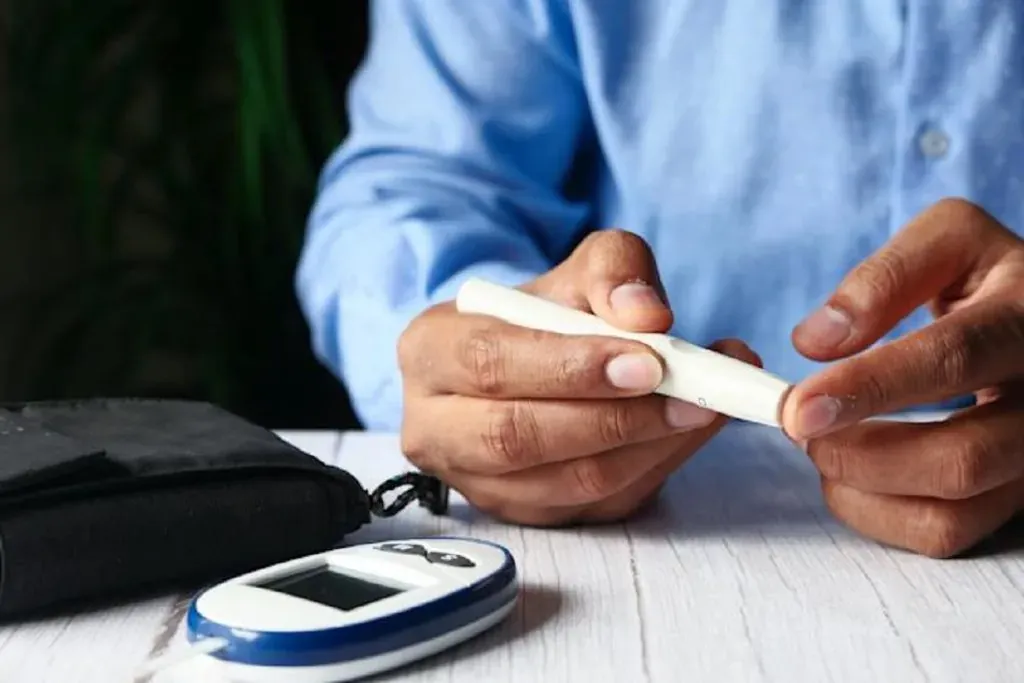A Fasting Blood Sugar test (FBS), also known as a Fasting Blood Glucose test, is a common and important blood test that measures the amount of glucose (sugar) in your blood after a period of not eating.
FBS test is a primary tool used by doctors for diabetes screening and can help diagnose diabetes, especially when symptoms like excessive thirst, frequent urination, unexplained weight loss, or increased hunger are present. This guide explains everything you need to know about the fasting blood sugar test.
When is a Fasting Blood Sugar Test Needed?
Your doctor might recommend an FBS test if:
- You have symptoms suggestive of high blood sugar (hyperglycemia) or low blood sugar (hypoglycemia). Common symptoms include fatigue, dizziness, anxiety, heart palpitations, and sometimes joint aches (with hyperglycemia).
- You have risk factors for diabetes (e.g., family history, overweight, high blood pressure, certain ethnicities).
- You are pregnant (typically screened for gestational diabetes between 24-28 weeks).
- You have already been diagnosed with diabetes or prediabetes, requiring regular monitoring of your blood sugar levels.
- As part of a routine health check-up.
How to Prepare for Your Fasting Blood Sugar Test
The key requirement is fasting. This means:
- Do not eat or drink anything (except water) for at least 8 hours before your blood sample is taken.
- Avoid sugary drinks, juice, coffee (even black), tea, and alcohol during the fasting period.
- It’s often easiest to schedule your fasting blood sugar test for the morning after fasting overnight (e.g., after your last meal the previous evening).
- Inform your doctor about any medications you are taking, as some can affect blood sugar levels.
Why Does Fasting Matter for This Test?
Our bodies convert carbohydrates from food into glucose, which is our main energy source. Insulin, a hormone produced by the pancreas, helps move glucose from the blood into our cells for energy or storage.
After eating, blood glucose levels naturally rise and then fall as insulin does its job. By measuring your fasting blood glucose, doctors get a baseline reading of how your body manages sugar without the immediate influence of a recent meal. This provides a clearer picture of your underlying glucose regulation and insulin sensitivity.
- High fasting blood sugar often indicates that your body isn’t using insulin effectively (insulin resistance) or isn’t producing enough insulin.
- Low fasting blood sugar (less common in fasting tests unless related to certain conditions or medications) means blood sugar is lower than normal.
Persistently high blood sugar levels (hyperglycemia) can, over time, damage nerves, blood vessels, eyes, kidneys, and the heart. Uncontrolled high blood sugar during pregnancy (gestational diabetes) can pose risks to both mother and baby.
How is the FBS Test Performed?
It’s a simple blood test.
- A healthcare professional (like a phlebotomist or nurse) will clean an area on your arm (usually the inside of the elbow).
- A needle is used to draw a small sample of blood into a vial.
- Alternatively, for some glucose monitoring devices, a small drop of blood might be taken from a finger prick.
- The blood sample is then analyzed in a laboratory to measure the glucose level.
Understanding Your Fasting Blood Sugar Test Results
Results are typically measured in milligrams per deciliter (mg/dL) or millimoles per liter (mmol/L). Here are the general ranges used for diagnosis (using mg/dL):
- Normal Fasting Blood Sugar: 70 – 99 mg/dL
- Meaning: Your blood sugar level is within the healthy range.
- Prediabetes (Impaired Fasting Glucose): 100 – 125 mg/dL
- Meaning: Your fasting blood sugar level is higher than normal but not yet high enough for a diabetes diagnosis. This indicates an increased risk of developing type 2 diabetes. Lifestyle changes (diet, exercise, weight loss) are often recommended.
- Diabetes: 126 mg/dL or higher on two separate tests
- Meaning: Your blood sugar level is in the diabetic range. Your doctor will likely recommend further testing (like A1c) to confirm the diagnosis and discuss a treatment plan, which may include lifestyle changes and medication.
Note: Ranges may vary slightly depending on the laboratory.
Conclusion
The FBS test is a simple yet powerful tool for assessing your risk for diabetes and monitoring your glucose control. It provides a snapshot of your blood sugar level after an overnight fast, offering valuable insights for early detection and management of diabetes and prediabetes.
Need a convenient way to get your Fasting Blood Sugar Test done? Healthtracka offers at-home sample collection, making it easy to complete your recommended health screenings without visiting a lab. Book your health check-up, including an FBS test, today.




